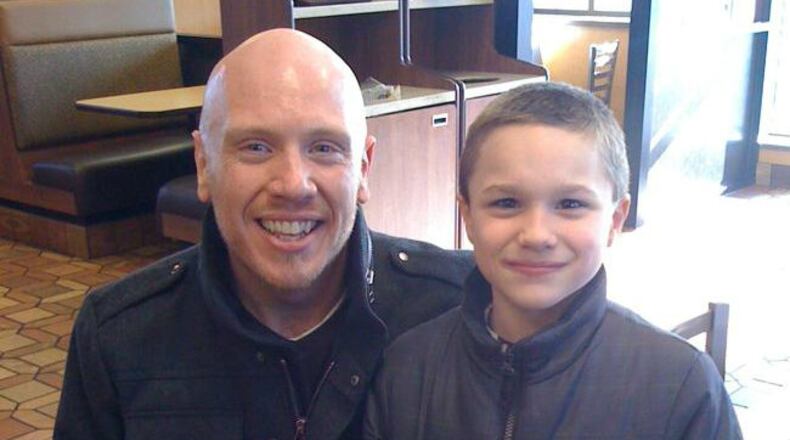While the majority of children still live with two parents — married or unmarried — there is a growing variation in what constitutes a household or a family in America. And, according to a local expert on families, that isn’t necessarily bad for children.
"It's not necessarily the family structure that affects the children's (well being), it is the stability," said Laila Murphy, professor of family science at Miami University. Having a two-parent household where there is instability, fighting, domestic violence or substance abuse is far more damaging to a child than a stable, loving one-parent household, Murphy said.
The changing makeup of a traditional family is attributable to both economic and cultural factors, she said.
“Being a single mom by choice is less frowned upon,” Murphy said. “The culture plays a huge role. Hispanics and African Americans are less likely to be (negatively) affected by being a single mother because they have a larger support network.”
The economy also plays a role. In part because of economic uncertainty, many millennials are delaying marriage or shunning it entirely, leading to more single-person households.
Bucking the trend
The percentage of U.S. children living in one-parent households nationwide has been steady at around 25 percent since the late 1980s, according to the Census, but the percentages are higher in most local communities.
In Montgomery County, 34 percent of households with children were headed by a single mother and 9 percent by a single father in 2015, the most recent year county-level data is available.
RELATED: Miami Valley getting older, more diverse
Clark County had similarly high numbers with single parents heading 42 percent of households with kids.
Warren County is the only local county that falls significantly under the national numbers, with just 19 percent of children living in single-parent homes.
More single dads
Brian Buttrey of Dayton represents a category of parent that is fast-rising: single fathers raising children.
The percentage of U.S. children living with one parent who live with just their father saw an increase from 12.5 percent in 2007 to 16.1 percent in 2017.
Buttrey has always wanted to be a dad, and as he turned 40 in 2009, he felt secure enough economically to make that leap.
Through Montgomery County Children Services, he was connected with Zach, a child in foster care in Stark County who needed a permanent home.
In the seven years since Buttrey officially adopted Zach, he’s watched his son — now a junior at Carroll High School — grow into a typical teenager who excels at gymnastics but stresses about his grades and getting into a good college.
RELATED: U.S. incomes rising but Dayton-area growth is uneven
Buttrey said most people react positively when they learn he’s a single dad by choice, but at times he’s reminded it’s not the norm. His son’s school has offered a mother-son dance and a father-daughter dance, but no special event that he and his son could attend together, he said.
Being a single parent has its own unique challenges, Buttrey said. He’s fortunate that his IT job allows him to work from home, but he lost the pillars of his support network when both of his parents died during the time he’s been a parent. His friends have stepped up to provide parental backup when needed, he said.
What does he like most about being a parent?
“The best joy comes every day, whenever we part ways… my family we always say ‘I love you,’” he said. “And those moments when he’s excited about something he’s done.”
Raising grandkids
About 2 percent of children nationwide live with just their grandparents. An additional 4 percent live in their grandparents’ home but with one or more parents also living there.
Situations like job loss, substance abuse, domestic violence, and parental incarceration have driven many grandparents to take in their grandkids or great-grandkids, Murphy said. It can be an ideal situation for the child because it maintains family cohesiveness, but can also be a huge burden for older adults financially and emotionally.
Ohio has nearly 40,000 grandparent-caregiver households, according to the Ohio Association of Community Action Agencies, and one in three live in poverty compared to one in five traditional parent households.
“Grandparent caregivers often struggle financially since many already live on a fixed income that does not increase when they gain custody,” a report from the agency says.
Delaying marriage
Another big household category is one with no children and no spouse or housemates.
“If you live solo, you’re not alone,” said Lydia Anderson, a demographer for the Census. “In 1960, one-person households represented only 13 percent of all households. This year, data from the Census Bureau shows there are 35.3 million one-person households representing 28 percent of all households.”
And a growing number of those one-person households are people who have never been married.
RELATED: Local median age increasing faster than national average
The median age for first-time marriages is now 29.5 for men and 27.4 for women. That’s up from 23.7 and 20.5 respectively in 1947. And in 2017, 32 percent of all adults have never been married compared to 23 percent in 1950, said Benjamin Gurrentz, a survey statistician for the Census.
“Young adults are waiting longer to tie the knot,” Gurrentz said.
About the Author
